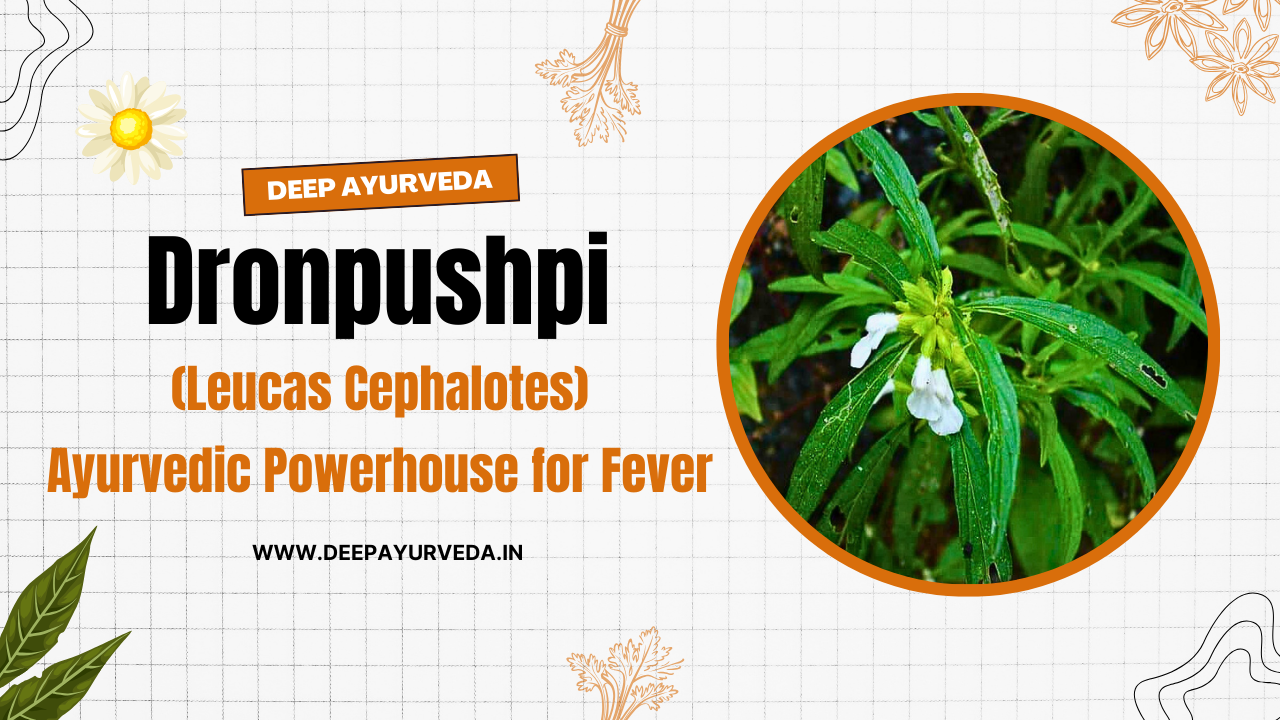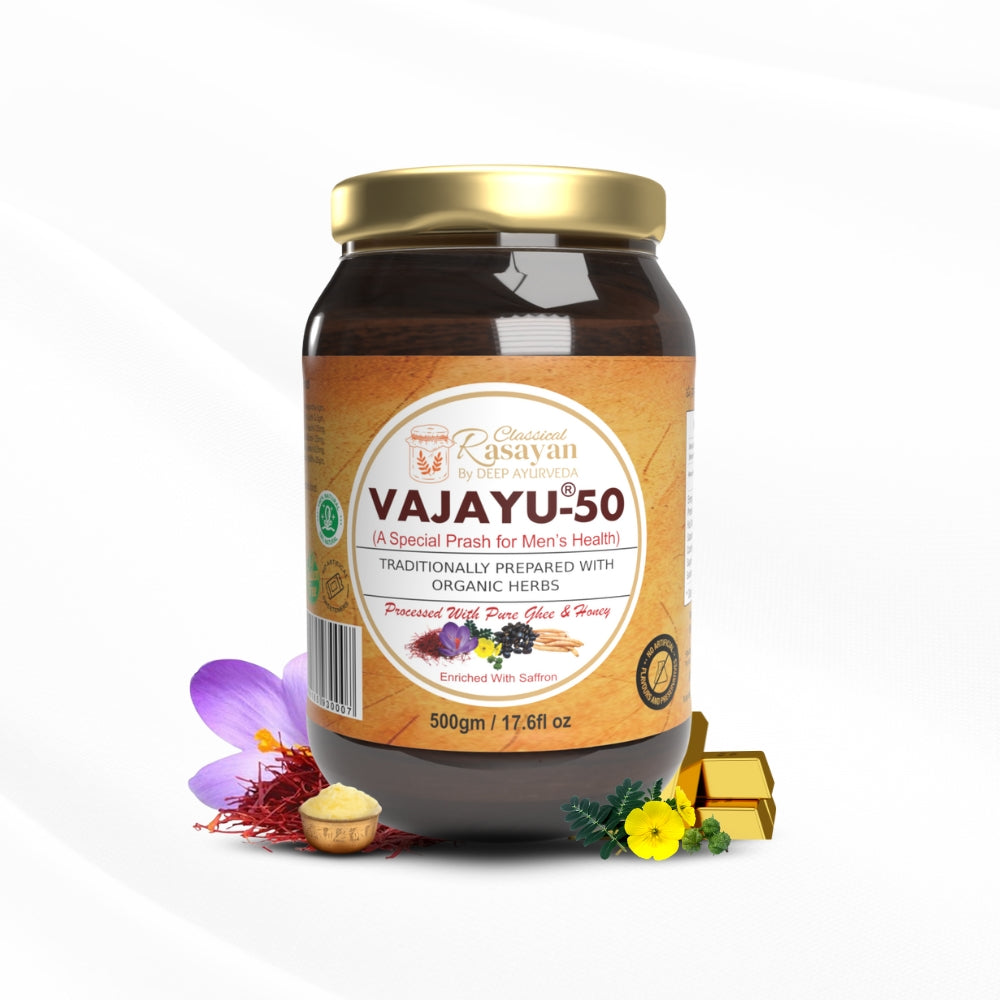Dronpushpi, scientifically known as Leucas cephalotes, is a lesser-known Ayurvedic herb revered in classical texts for its potent healing properties. Found abundantly during monsoons and often mistaken as a weed, this plant is a Kapha-Pitta balancing gem—used traditionally for fevers, respiratory issues, skin disorders, and digestive complaints.
Botanical Overview:
- Family: Lamiaceae (Mint family)
- Common Names: Goma, Kukurmutta, Lion’s Ear, Guldora
- Sanskrit Name: Dronpushpi
- Habitat: Moist regions, roadsides, fields across India
Its white whorled flowers and lance-shaped leaves make it easy to identify, especially during monsoon when it flourishes naturally.
Ayurvedic Properties (Rasa-Guna-Virya-Vipaka):
- Rasa (Taste): Tikta (Bitter), Katu (Pungent)
- Guna (Qualities): Laghu (Light), Ruksha (Dry)
- Virya (Potency): Ushna (Hot)
- Vipaka (Post-Digestive Taste): Katu (Pungent)
- Dosha Impact: Balances Kapha and Pitta
Therapeutic Benefits of Dronpushpi:
1. Respiratory Support: Acts as a mucolytic and natural bronchodilator. Used in coughs, asthma, and allergies.
2. Fever Relief (Jwara): Widely used in decoction form for seasonal fevers and Kapha-Pitta fevers.
3. Skin Disorders: External paste helps with eczema, boils, and wounds due to antiseptic and anti-inflammatory effects.
4. Anti-inflammatory & Pain Relief: Reduces swelling, stiffness, and pain from arthritis or injuries.
5. Digestive & Deworming: Stimulates Agni (digestive fire) and helps in treating indigestion and worm infestations.
6. Mental & Cognitive Benefits: Used in traditional medicine to support mental clarity and reduce anxiety.
Modern Scientific Insights:
- Antibacterial and antifungal properties
- Liver-protective (hepatoprotective) effects
- Rich in antioxidants
- Shows anti-cancer potential in lab studies
How to Use Dronpushpi:
1. Kashayam (Decoction): Boil 1 tsp dried leaves in 2 cups water, reduce to 1 cup. Drink once daily for fevers and digestive health.
2. Leaf Juice (Swarasa): 5–10 ml juice effective for skin conditions and detox.
3. Topical Paste: Leaves + turmeric applied externally on boils, eczema, or cuts.
Common Ayurvedic Formulations:
- Jwarahara Kashayam
- Herbal Arks for cough & flu
- Folk combos with Tulsi, Neem, or Giloy
Spiritual & Energetic Use: Used in folk rituals for purification—burnt like dhoop to clear negative energy and cleanse the environment.
Conclusion
Dronpushpi may grow wild and unnoticed, but it’s an Ayurvedic treasure—offering a natural solution for common ailments like fevers, skin issues, and respiratory problems. With both classical texts and modern science backing its use, this humble herb deserves a place in every Ayurvedic home pharmacy.






